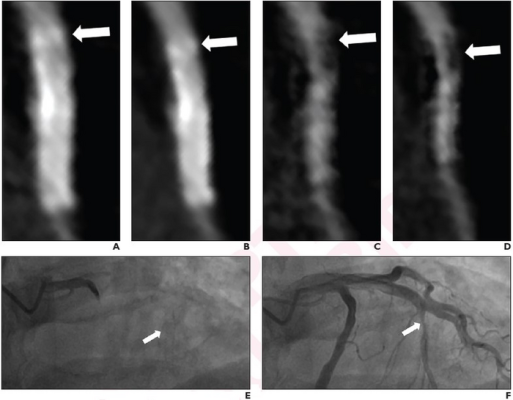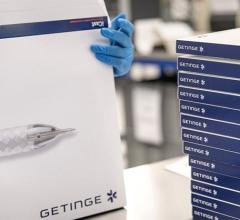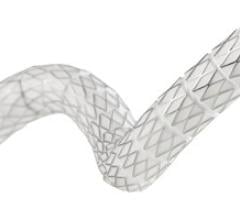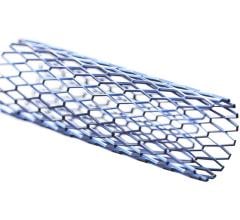
A. Conventional HIR image and B. conventional DLR image show blurred appearance of proximal aspect of stent (arrow). C. Subtraction HIR image and D. subtraction DLR image show discrete region of hypoattenuation at proximal aspect of stent (arrow). Both readers provided a diagnosis of in-stent restenosis only for subtraction HIR and subtraction DLR. Diagnostic confidence score for the four methods for reader 1 was 2, 2, 3, and 4, respectively, and for reader 2 was 1, 2, 3, and 3, respectively. Patient subsequently underwent invasive catheter angiography. Fluoroscopic imagines obtained (E) before and (F) after contrast media injection demonstrate in-stent restenosis of proximal aspect of stent (arrow). Image courtesy of ARRS and AJR
August 15, 2022 — According to ARRS’ American Journal of Roentgenology (AJR), the combination of deep-learning reconstruction (DLR) and a subtraction technique yielded optimal diagnostic performance for the detection of in-stent restenosis by coronary CTA.
Noting that these findings could guide patient selection for invasive coronary stent evaluation, combining DLR with a two-breath-hold subtraction technique “may help overcome challenges related to stent-related blooming artifact,” added corresponding author Yi-Ning Wang from the State Key Laboratory of Complex Severe and Rare Diseases at China’s Peking Union Medical College Hospital.
Between March 2020 and August 2021, Wang and team studied 30 patients (22 men, 8 women; mean age, 63.6 years) with a total of 59 coronary stents who underwent coronary CTA using the two-breath-hold technique (i.e., noncontrast and contrast-enhanced acquisitions). Conventional and subtraction images were reconstructed for hybrid iterative reconstruction (HIR) and DLR, while maximum visible in-stent lumen diameter was measured. Two readers independently evaluated images for in-stent restenosis (≥50% stenosis).
Ultimately, coronary CTA using DLR and subtraction technique—with a combined (conventional and subtraction images) interpretation—yielded PPV, NPV, and accuracy for in-stent restenosis for reader 1 of 73.3%, 93.2%, and 88.1%, and for reader 2 of 75.0%, 84.3%, and 83.1%, respectively.
Acknowledging that the two-breath-hold subtraction technique requires an additional noncontrast acquisition (and thus a higher radiation dose), “DLR allows a reduction in radiation exposure, while improving image quality,” the authors of this AJR article pointed out.
For more information: www.arrs.org


 April 17, 2024
April 17, 2024 








